See snapshots spanning 14 decades of care at Hennepin Healthcare
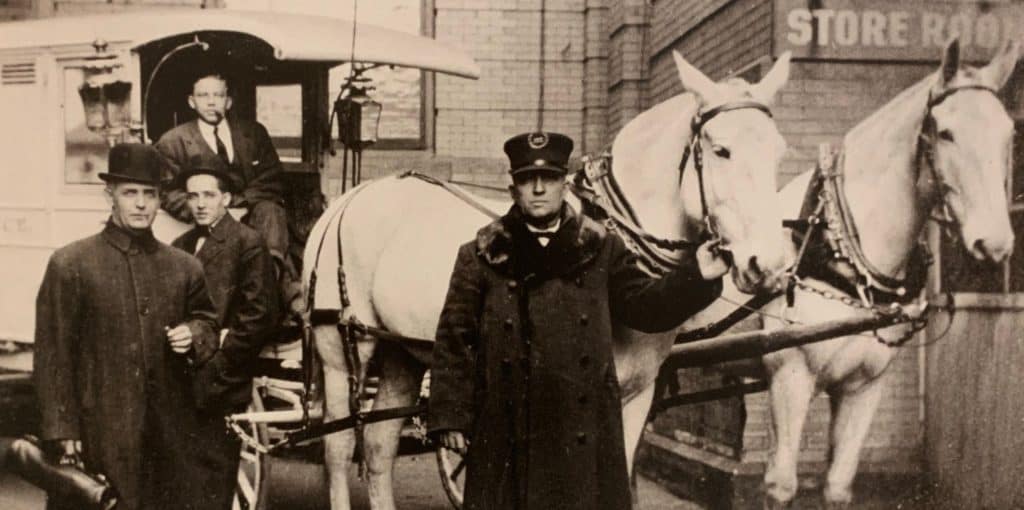
With the start of a new year (and decade!), it’s easy to forget how far Hennepin Healthcare has come since first opening its doors over 130 years ago, then named Minneapolis City Hospital. With that in mind, we put together a timeline to showcase some of the accomplishments, historical events, firsts and changes spanning across the last 14 decades that brought us to where we are today.
Although we couldn’t possibly cover all of the hundreds, if not thousands, of important moments in the history of Hennepin Healthcare, here are a selection of some of the highlights from the past few decades.
1880s
- 1887: Minneapolis City Hospital opens December 1 in a rented house at 724 11th Avenue South with a daily cost of 89 cents. City Physician James Henry Dunn is appointed superintendent.
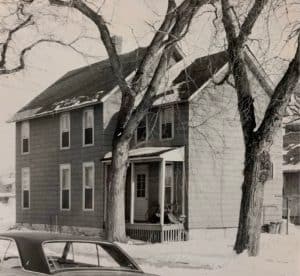
1890s
- 1894: Our first ambulance (left) is rented at cost of $1.50 per run. In 1900, a driver will be hired and a horse purchased. It won’t be until over 10 years later that we acquire an electric model ambulance (right).
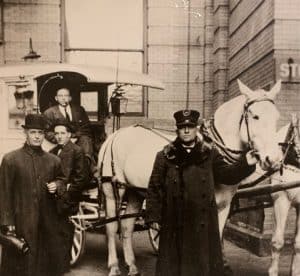
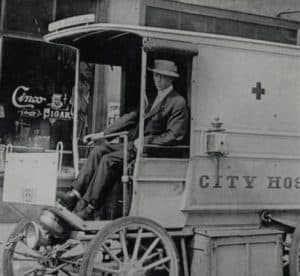
1900s
- 1908: X-ray Department is established.
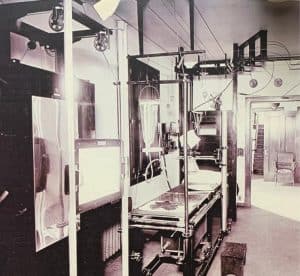
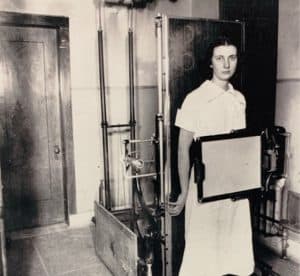
1910s
- 1914: Social Services Department is established; the first in Minnesota! In the photo below, Minneapolis City Hospital staff are shown working in the Social Services department in 1916.
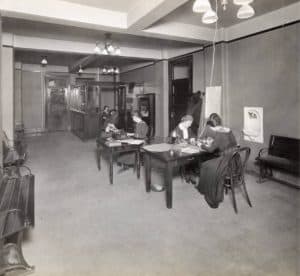
- 1918: During this time 1,015 people are hospitalized during the influenza epidemic.
1920s
- 1920: Minneapolis City Hospital is renamed Minneapolis General Hospital (MGH) and placed under new management, the Minneapolis Board of Public Welfare.
- 1921: Medical residency program begins, but residents don’t begin receiving any pay for their work until 1930. The photo below shows a group of residents and staff in 1924.
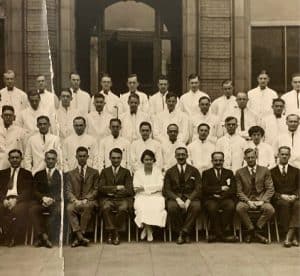
1930s
- 1939: Psychiatric Inpatient services is established.
1940s
- 1940: Sister Elizabeth Kenny (left) lectures at Minneapolis General and University of Minnesota Hospitals. MGH is the only hospital anywhere to allow her to demonstrate her techniques for treating polio.
- 1946: MGH adds 1,000 staff during a polio epidemic. Fifty patients were admitted daily and 30 iron lung respirators, like the ones shown on the right, were in use at one time.
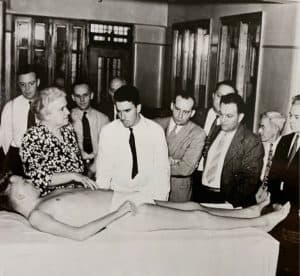
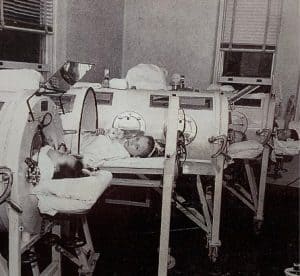
1950s
- 1955: Georgia Nobles, RN, director of Nursing, institutes the interpreter system.
1960s
- 1963: The first kidney transplant in the central US is performed by Claude Hitchcock, MD (left). Kidneys ready for transplant were transported in insulated containers like the one on the right during earlier years of the practice.
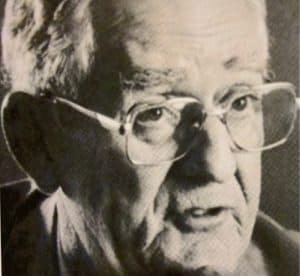
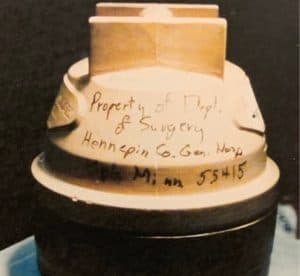
- 1964: Minneapolis General Hospital becomes Hennepin County General Hospital. That same year, our first hyperbaric chamber is completed and opened.
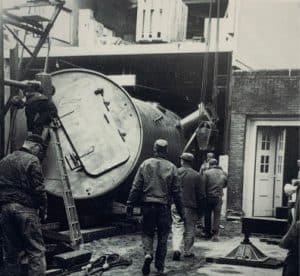
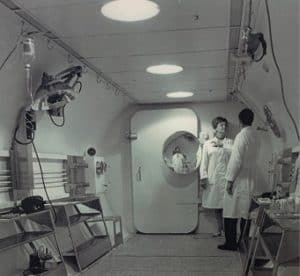
- 1967: The Suicide Prevention Hotline is established, the first in Minnesota.
1970s
- 1970: A kidney is transplanted from a Boston patient to a Hennepin patient in Minnesota’s first computer match through organ registry at UCLA.
- 1974: The organization’s name is changed to Hennepin County Medical Center (left).
- 1976: HCMC makes the move from the old hospital, which was over 100 years old at the time, to our present facility. Pictured right is a staff member transporting a bed-ridden patient during moving day in May of that year. The transition went so smoothly that it was completed two hours ahead of schedule.
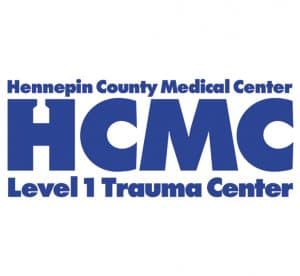
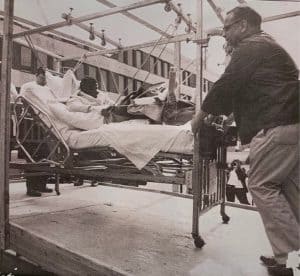
1980s
- 1986: Burn Center staff perform their first major “cultured” skin grafts on a patient who went on to survive third-degree burns on over 98 percent of his body. He left the hospital nearly nine months later (left).
- 1988: Metropolitan-Mount Sinai Medical Center (M-MSMC) is born when Mount Sinai Hospital merges with Metropolitan Medical Center (MMC), which was itself the result of a 1970 merger of St. Barnabas and Swedish Hospitals. St. Barnabas (right) was Minneapolis’ first hospital, established in 1871.
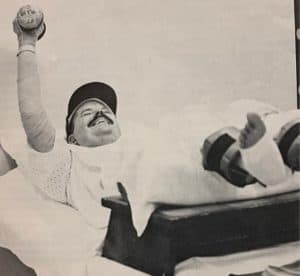
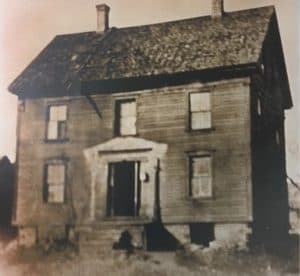
1990s
- 1998: HCMC surgeons use laparoscopic surgery to remove a donor kidney and then transplant it into the donor’s mother. This minimally invasive technique uses multiple small incisions and a video camera to detach and bag the kidney, then remove it through a two-inch incision.
2000s
- 2007: Hennepin Healthcare Systems, Inc. officially begins and debuts the hands logo.
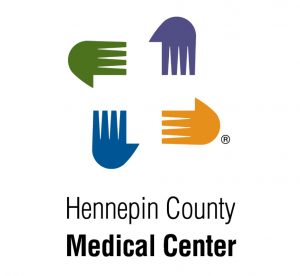
- 2007: 35W Bridge collapse patients brought to HCMC.
- 2009: Dr. David Hilden begins hosting Healthy Matters, a new show on WCCO that discusses health topics each week and features interviews with Hennepin County Medical Center physicians and staff.

2010s
- 2011: The new hyperbaric chamber is delivered and installed.
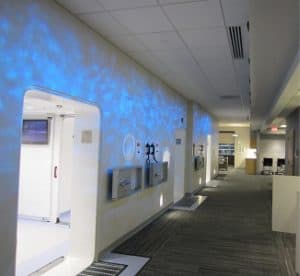
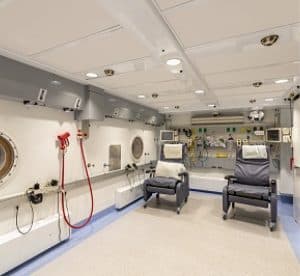
- 2013: Recognized as a “Leader in LGBT Healthcare Equality” in the Healthcare Equality Index 2013, an annual survey conducted by the Human Rights Campaign Foundation (also awarded in 2014, 2016, and 2017).

- 2018: The Clinic & Specialty Center officially opens to the public and Hennepin County Medical Center becomes Hennepin Healthcare to reflect the variety of services offered to the community.


Much of the information and pictures seen above are contained in both paper and digital files in the Hennepin Medical History Center, located in the basement of the Blue Building on the downtown Hennepin Healthcare campus. Museum hours are typically Tuesday and Thursday from 10 am-2 pm, but may be subject to change. Museum staff are always willing to help with special projects or research.

